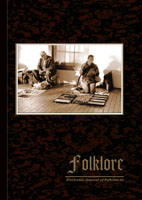Fate Written on the Forehead in Serbian Oral Narratives
Fate Written on the Forehead in Serbian Oral Narratives
Author(s): Nemanja RadulovićSubject(s): Customs / Folklore
Published by: Eesti Kirjandusmuuseum
Keywords: Balkans; belief; fate; India; Islam; migrations; narratives; phraseologisms; regions
Summary/Abstract: This paper examines narratives about fate from the Serbian corpus, as well as beliefs related to them. A characteristic motif is that the demons of fate write fate on people’s forehead. Such motifs and beliefs are also encountered elsewhere on the Balkans, especially in the areas that were under Turkish influence (Greece, Albania, Bulgaria), so it is undoubtedly a Balkanism. The presence of the motif among Turks and Arabs indicates oriental roots. However, the bottom source seems to be India where the oldest examples have been recorded. Classical Sanskrit literature (including tales collections, such as Hitopadeśa, Pañcatantra, Vikramacarita, Vetalapañcaviṃśati) provides numerous examples of this motif. This is certainly not a source but only a testimony of the presence of the motif. The contemporary rituals and views of modern popular Hinduism testify to its connection to belief. It seems that beliefs and narratives migrated via Muslim culture to the Balkans. Methodologically speaking, this is not a matter of going back to Benfey or Cosquin, but an example of the importance of regions and cultural contacts. The motif and belief seem to be close to the phraseologism “written on the forehead”, but the conclusion is that they have different origins; while the idiom that is present in many languages comes from the idea of “reading”, discerning one‘s nature, the narrative motif clearly has a specifically Oriental origin and is linked to living belief.
Journal: Folklore: Electronic Journal of Folklore
- Issue Year: 2014
- Issue No: 59
- Page Range: 29-44
- Page Count: 16

